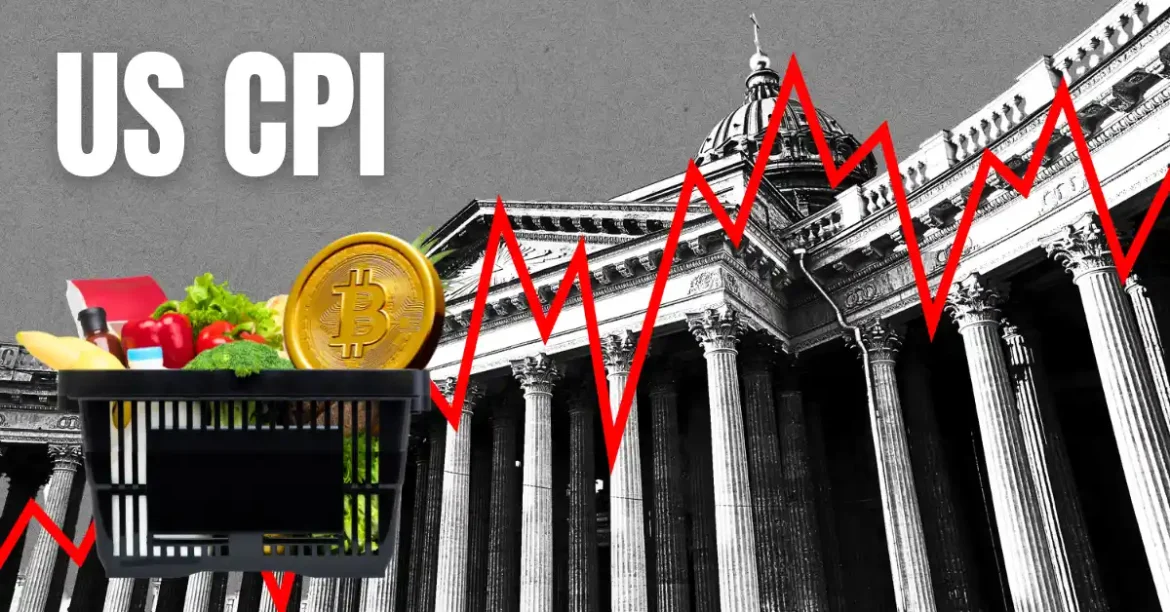Understanding the Relationship Between US CPI Data and Bitcoin Price Movements
The Consumer Price Index (CPI) is a critical inflation indicator widely monitored by investors and policymakers alike. It measures changes in the price level of a market basket of consumer goods and services and serves as a benchmark for gauging inflation trends within the US economy. The CPI is released monthly by the Bureau of Labor Statistics (BLS), with two key versions published: the CPI-U (covering urban consumers) and CPI-W (covering urban wage earners). These releases have profound implications for the Federal Reserve’s (Fed) monetary policy decisions and, subsequently, for market assets such as stocks, commodities, and cryptocurrencies, especially Bitcoin.
—
How CPI Data Influences the Federal Reserve’s Policy and Its Ripple Effect on Bitcoin
Inflation Readings and Fed Rate Decisions
The direction of inflation, as indicated by CPI data, plays a decisive role in shaping the Fed’s outlook on interest rates. If CPI readings come in above expectations—for instance, above 2.4% or significantly higher than forecasts—it suggests persistent inflationary pressure. Such signals decrease the likelihood of an interest rate cut and may even prompt the Fed to maintain or raise rates to curb inflation.
Conversely, softer or cooling inflation data—such as a drop in headline or core CPI—can strengthen market hopes that the Fed will ease monetary policy by reducing rates. Lower rates typically encourage risk-taking by enhancing liquidity and making borrowing cheaper, thereby benefiting risk assets, including Bitcoin.
Impact on Crypto Market Sentiment
Given Bitcoin’s positioning as a risk asset and, increasingly, as an inflation hedge, its price reacts sharply to CPI results and related Fed actions:
– Higher-than-expected CPI: Elevates concerns over prolonged inflation, likely keeping Fed policy hawkish. The anticipated reduction in liquidity and higher interest rates can deter speculative investment in cryptocurrencies, causing Bitcoin prices to decline or suffer volatility.
– Lower-than-expected CPI: Signals easing inflation that could lead to Fed rate cuts. This environment tends to boost investment into Bitcoin, driving its price upward as seen when Bitcoin climbed above $103,000 after April’s softer-than-expected inflation data in 2025.
—
Recent Trends in Bitcoin Price Relative to CPI Releases
Bitcoin’s price movements over the recent months illustrate the sensitivity of crypto markets to CPI data:
– Following the CPI report of April 2025, which showed steady but softer inflation, Bitcoin surged past $100,000, reflecting renewed bullish sentiment fueled by expectations of Fed policy easing.
– In earlier months, such as February 2025, a CPI rise to 2.8% sparked a notable Bitcoin price increase to around $82,000, demonstrating how positive inflation signals (stabilization or moderation) can boost crypto valuations.
– Conversely, higher-than-anticipated inflation readings tend to be met with cautious or declining Bitcoin prices as investors brace for continued or increased monetary tightening.
—
Additional Factors Modulating CPI Impact on Bitcoin
Federal Reserve Communications and Regulatory Developments
The Fed’s statements and decisions beyond the raw CPI data greatly influence market psychology. For example:
– Withdrawal of previous crypto-related banking guidance by the Fed and other regulators signals shifting regulatory frameworks, which play a role in market confidence and Bitcoin adoption.
– Announcements about Fed chair appointments or unexpected rate cuts can act as catalysts for Bitcoin price volatility, as markets try to reprice future monetary conditions.
Broader Economic Indicators: Producer Price Index (PPI) and Treasury Yields
The PPI is another inflation metric that influences expectations for the CPI and Fed policy. Analysts often watch for PPI trends following CPI releases. For example, a higher PPI might reinforce inflation concerns, while a lower PPI supports the outlook for easing.
Treasury yields also provide insight into financial market expectations and risk appetite. Rising yields amid sticky inflation often weigh on risk assets including Bitcoin, whereas stable or declining yields can encourage bullish crypto moves.
—
Looking Ahead: The Potential of the June 11, 2025 CPI Report and Beyond
Analysts widely speculate that forthcoming CPI releases—such as the June 11, 2025 report—could act as potential breakout triggers for Bitcoin, especially if the inflation numbers further ease, bolstering the probability of Fed rate cuts. The crypto market’s next significant directional movement hinges on:
– Whether the headline and core CPI figures meet or undershoot expectations, reflecting inflation trajectory.
– The Fed’s accompanying commentary and monetary policy signals.
– Concurrent regulatory announcements (e.g., potential ETF approvals and changes in crypto banking rules).
Overall, a persistently cooling inflation environment combined with dovish Fed action would likely amplify bullish momentum for Bitcoin and other cryptocurrencies.
—
Conclusion: Navigating Crypto Markets Through the Lens of CPI Data
The US Consumer Price Index remains a pivotal economic indicator whose readings send strong ripples through cryptocurrency markets, especially Bitcoin. CPI data informs market expectations about inflation, guiding the Federal Reserve’s interest rate decisions. Since Bitcoin is sensitive to liquidity conditions and investor risk appetite, inflation results translate quickly into price movements.
A higher-than-expected CPI typically tightens the monetary environment, leading to diminished crypto valuations. In contrast, softer inflation numbers inspire optimism about rate cuts, boosting Bitcoin prices significantly—as demonstrated recently by Bitcoin’s surge above $100,000 amid easing CPI figures.
As fiscal and regulatory landscapes evolve alongside inflation metrics, investors need to watch CPI releases closely and interpret them in conjunction with Fed policies and broader economic signals. The dynamic interplay between inflation data and monetary strategy will continue to shape Bitcoin’s price trajectory and the wider crypto market’s fortunes in 2025 and beyond.





